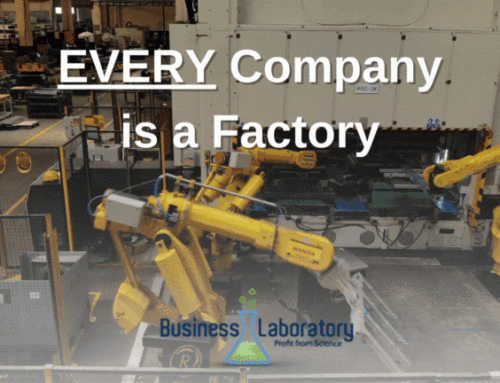
Humans in the Loop
Revisiting the Hypothesis
We learned early in our academic science endeavors that a hypothesis is a proposed explanation for a phenomenon. For a hypothesis to be a scientific hypothesis, the scientific method requires that one can test it. Scientists generally base scientific hypotheses on previous observations that cannot be satisfactorily explained with the available scientific theories. Proving or disproving a hypothesis is hard work.
Science explores the unknown with the known. The same process translates to data science. While I call myself a “simple mathematician”, my decision-making skillset is greatly enhanced in solving global organizational, financial, process and human problems by creating a viable hypothesis to further validate the anomalies affecting outcomes. From the foundation of a hypothesis, we go about the task of finding qualitative and quantitative data relevant to the problem.
Qualitative data is contained in the brains of your process operators and boots on the ground. These are the employees who are highly skilled, subject matter experts. The decisions they make directly affect process outcomes and decision-making. The data they store isn’t written down anywhere or tracked in the right ways. It’s job security for these experts, for without them, the organization cannot perform critical tasks.
Quantitative data is what is collected by mechanical processes and can be counted with a set of parameters for reporting. Is this data robust? Not unless your systems architecture is set up with the ability to access data anywhere in your data ecosystem and has the ability to see relevant qualitative data. Right now, most quantitative data is a complex if-then process with severe limitations. As I mentioned in my previous newsletter, “What is RONA?”, data is inhibited by linear thinking and programming. What if your data had no limitations? This is where data science takes on the role of problem-solving by hypothesis and exploring all known qualitative and quantitative data sources for optimization of outcomes.
Systems-Mindset
To create a hypothesis that will bring powerful tests to the infinite variables and possible conclusions that define best-case scenarios and resource optimization, there has to be a cultural buy-in of the systems-mindset with your entire organization. 100% education and participation with a why and a how. Cognitive automation must be introduced at all levels, cataloging manual processes, and creating a data ontology or common data language that can be used by everyone. Optimization of decision-making at every level of your organization will give leadership a microscope into things never before visible. Who doesn’t want that? The practice of a holistic systems mindset can solve problems thought unsolvable. Proving or disproving a hypothesis with the light speed of decision-modeling and AI is the future of knowing and the systems mindset will be the catalyst.
Cognitive Automation
Manual processes create no value by themselves. That thought should be a mic drop for you. Automation is here, and there is nothing you can do to stop it. Another mic drop. Some in the C-Suite know the term digital transformation well, but what exactly does that mean? It’s reimagining a manual process and automating it with digital technology. Some of the largest global companies have spent untold amounts of capital to do what the gatekeepers of company information foresaw as digital transformation, by creating stores of underused data in the cloud. This process is incomplete. In fact, it never will be complete, until you consider the tsunami of human process automation that is evolving with cognitive automation.
Human in the Loop Model (HIL)
From cognitive automation, we go next to the actual manual processes that still exist by your human SMEs. For instance, take the leap steps of a dreamer, Elon Musk, who put visionary hypotheses in play by spearheading projects such as the recent landing of the Falcon 9 First Stage Rocket. You can’t watch this video and not have your mind race with wonder.
Where are the humans in this scenario? Not in the driver seat of a one-time use rocket. This next-gen space vehicle is reusable and is piloted with AI. The humans in the loop behind this marvel enabled the automation of a highly complex space mission, unthinkable ten years ago.
Your industry, no matter what it is, will see this kind of dynamic.
Technology should not be the only driving force. Studying humans in the loop (HIL) and knowing which parts of what they do can be automated, will be key to successfully iterating your hypothesis in ways that will optimize the human part of the problem.
Eating an Elephant
Yes, this is going to take leadership to new levels of critical thinking and release the false sense of security and codependency on technology alone. How to get started? Start. Find the right navigator to lead you into your vast stores of data and create new data DNA for problem-solving. Let that navigator sit down with your human SMEs to create the qualitative foundation for your quantitative data. That same navigator will create models for decision-making clarity to help you reimagine the future of business with a 360-degree view of what is possible.
Get Started with Business Laboratory
Looking for help? Get in touch with us





